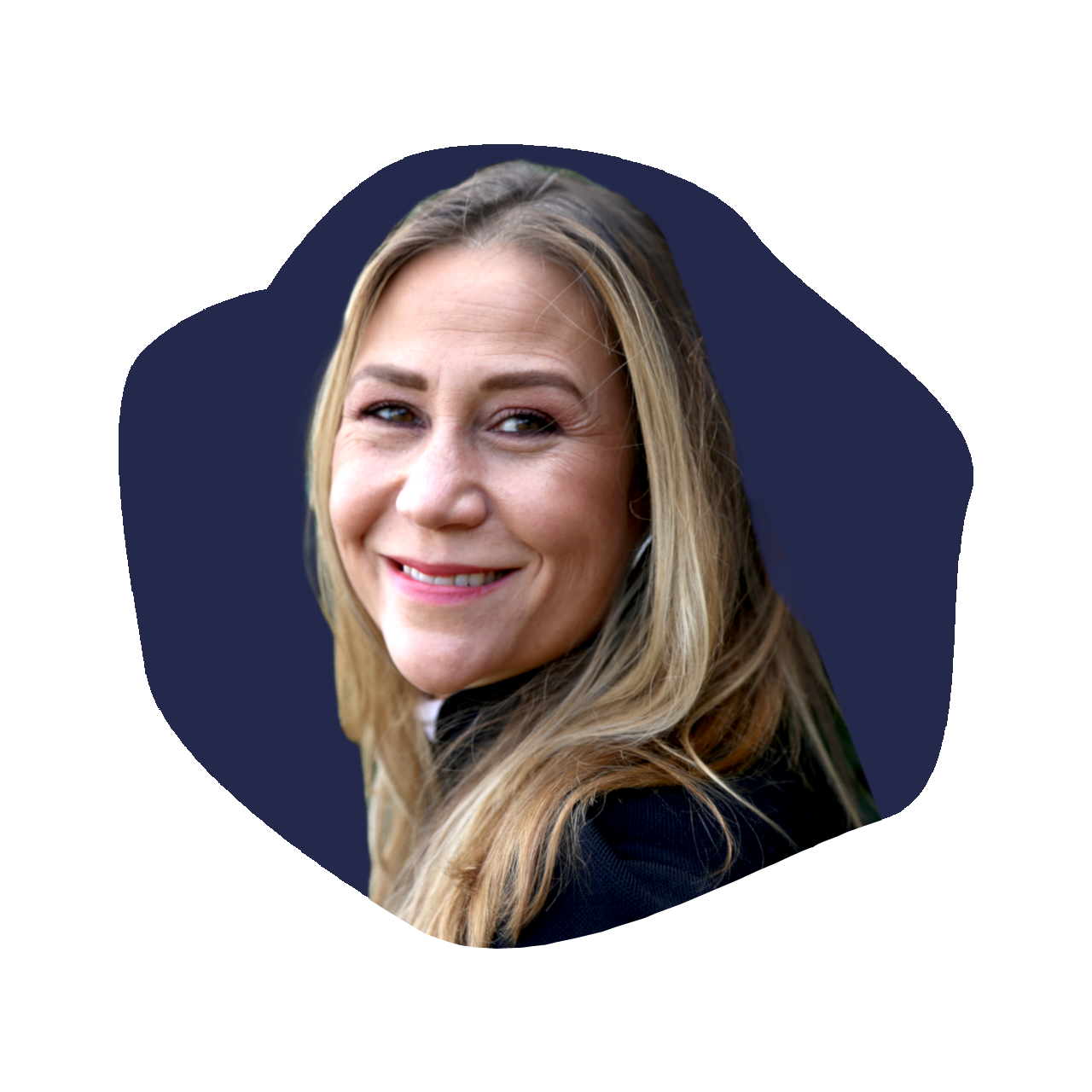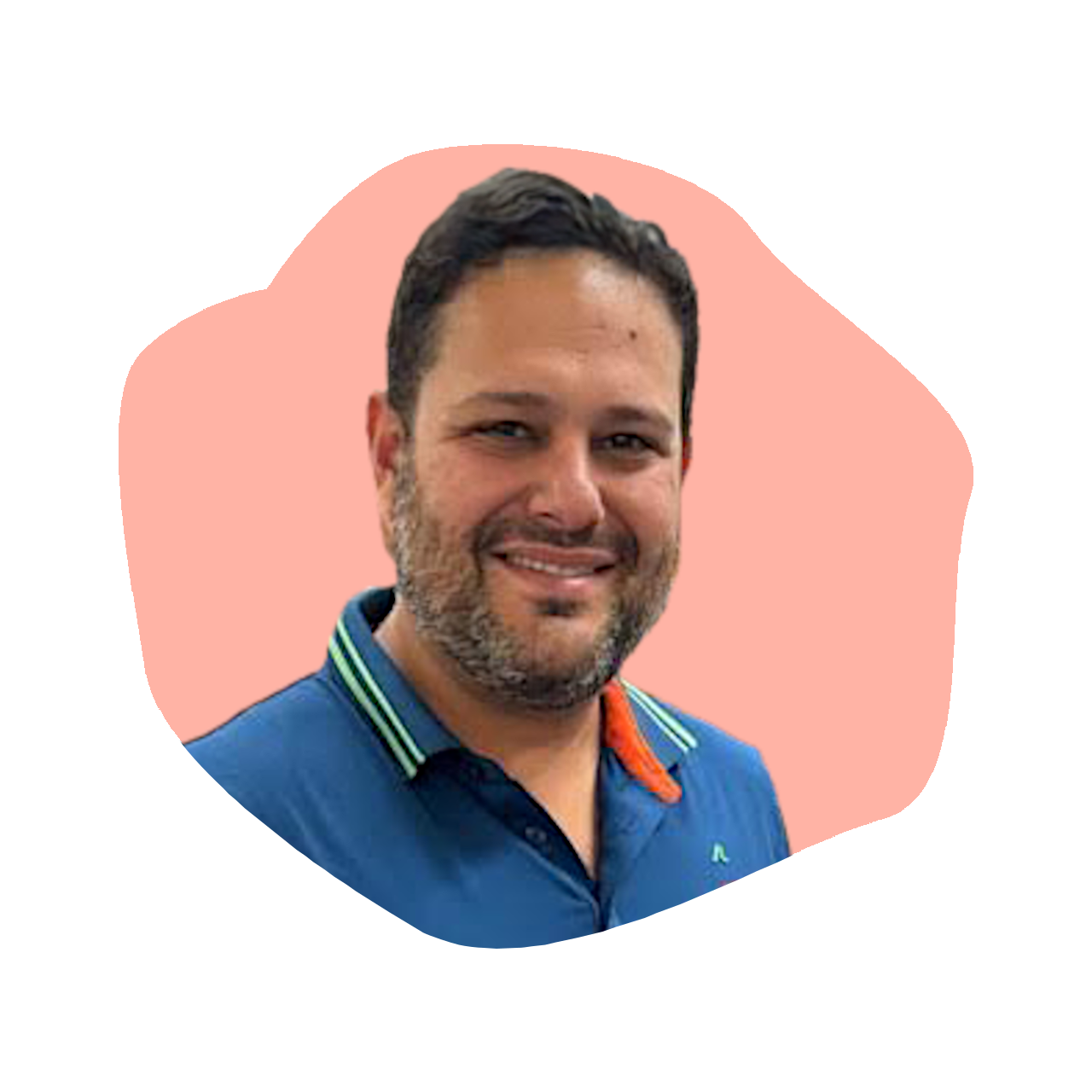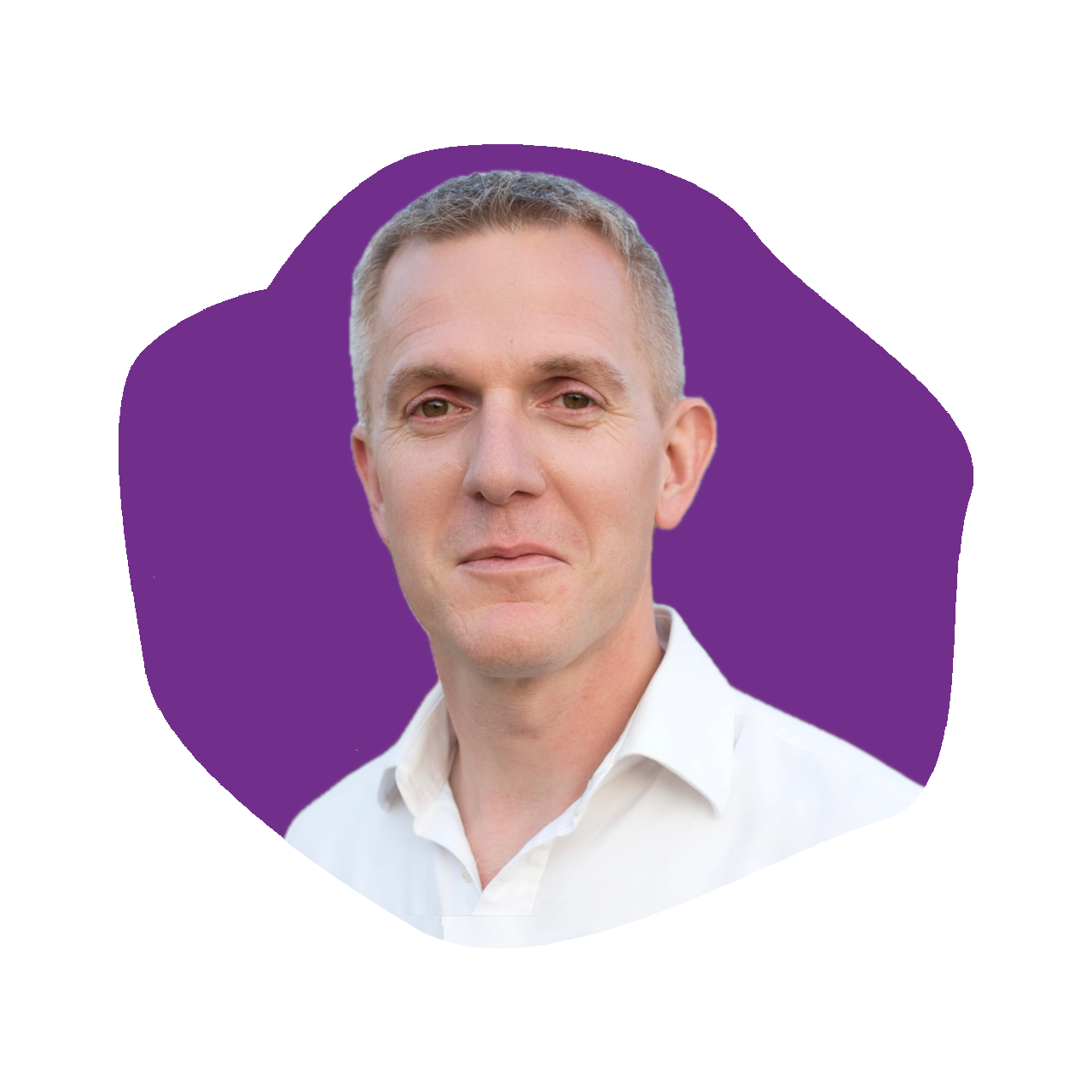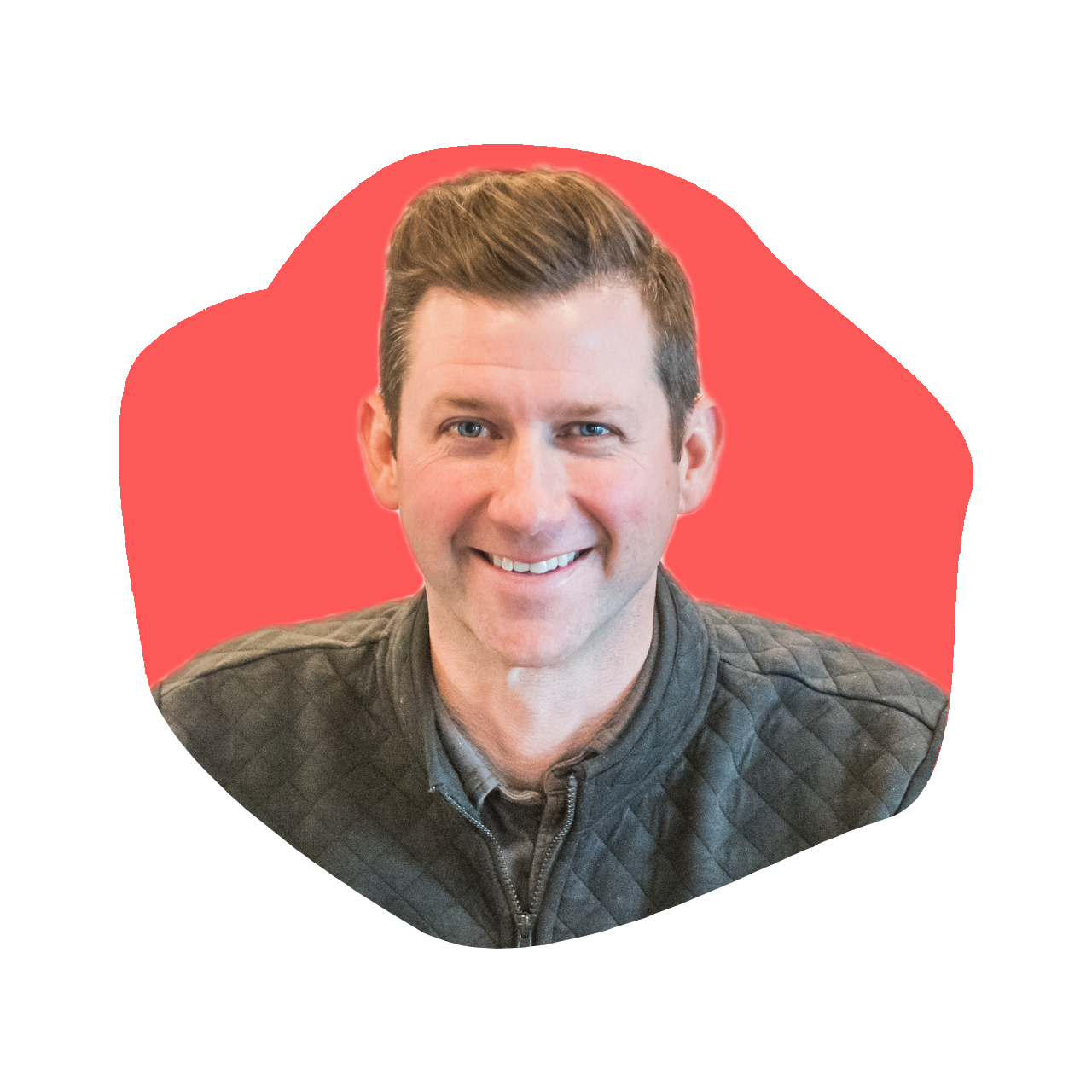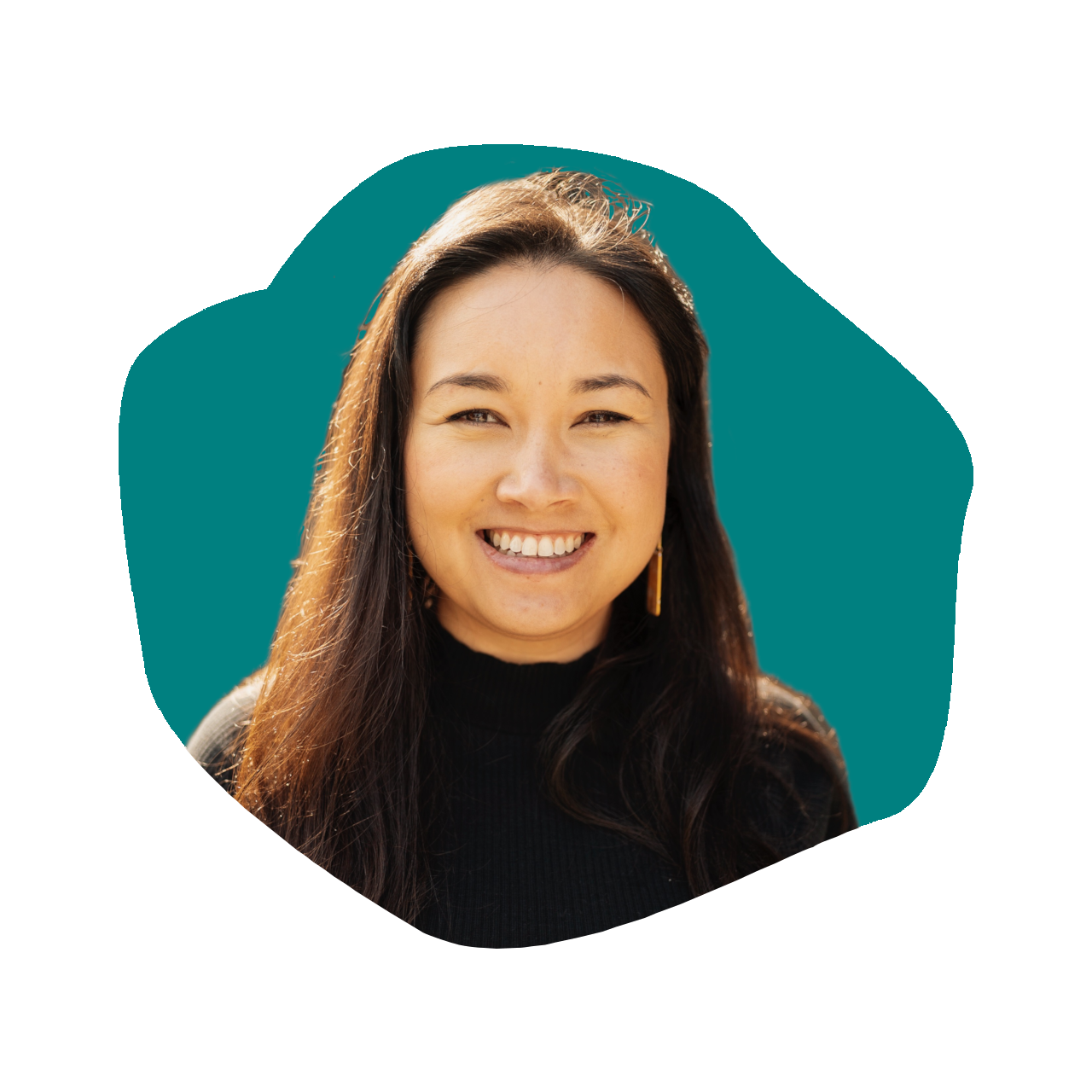Ben Chelf: Co-founder and CEO of Sol Reader
Episode 604
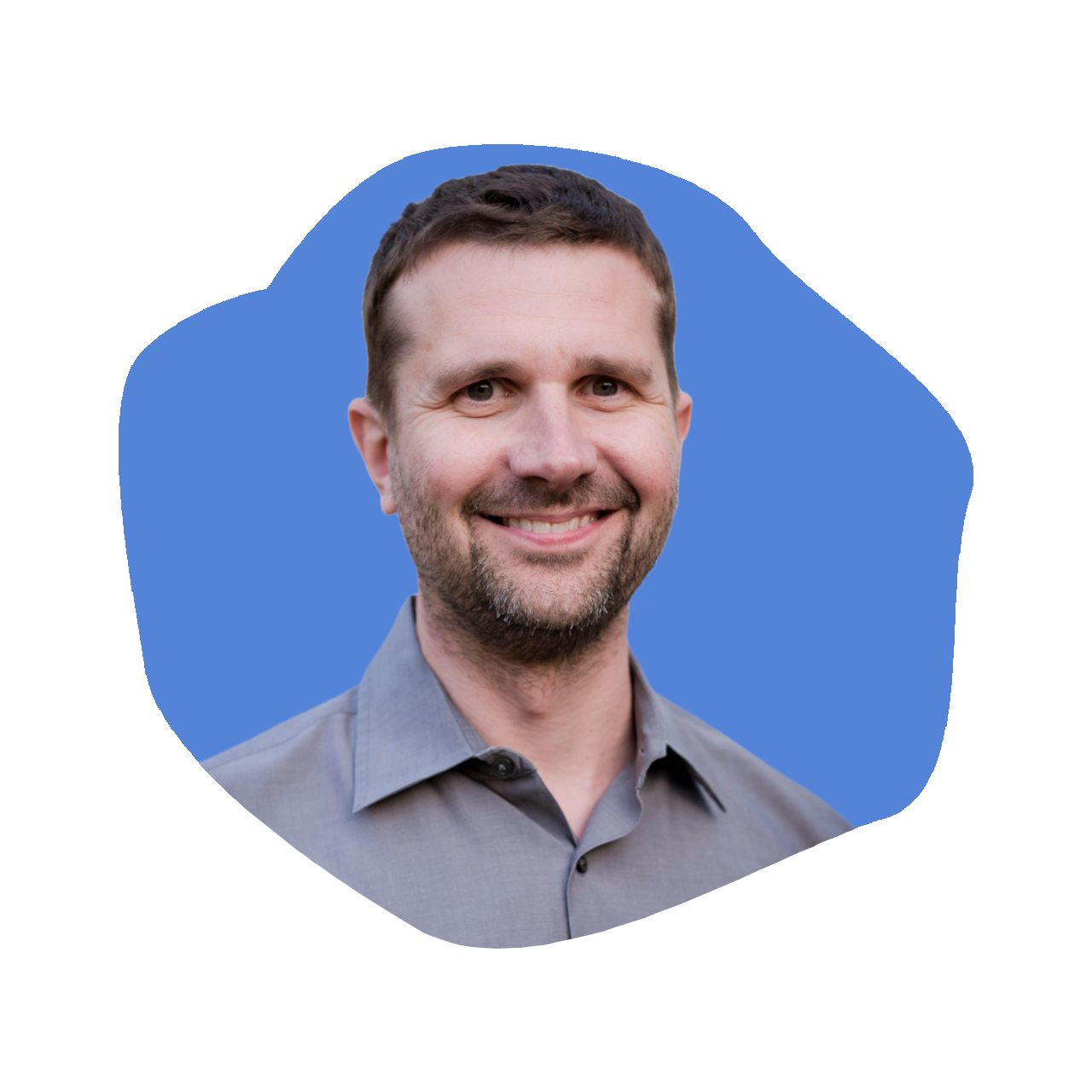
On this episode of The Kara Goldin Show, Ben Chelf, Co-founder and CEO of Sol Reader, joins us to discuss how he’s transforming the way we read in the digital age. Sol Reader, Ben’s innovative company, has created a unique VR e-reader designed to offer a healthier and more immersive alternative to traditional screen time. With a strong background in technology and entrepreneurship, including his success with Coverity, Ben shares the key lessons he’s learned about building products that prioritize both innovation and user well-being.
Ben dives into the challenges of blending VR technology with e-reading, the inspiration behind Sol Reader, and how his role as a father motivated him to create something that encourages healthier digital habits. He also shares valuable insights on digital hygiene, balancing mission with innovation, and how Sol Reader aims to shape the future of reading for all generations. This conversation is packed with actionable lessons on entrepreneurship, tech, and pushing boundaries. Don’t miss it! Tune in now on The Kara Goldin Show!
Resources from
this episode:
Enjoying this episode of #TheKaraGoldinShow? Let Kara know by clicking on the links below and sending her a quick shout-out on social!
Follow Kara on LinkedIn – Instagram – X – Facebook – TikTok – YouTube – Threads
Have a question for Kara about one of our episodes? Reach out to Kara directly at [email protected]
To learn more about Ben Chelf and Sol Reader:
https://www.linkedin.com/in/benchelf/
https://x.com/bchelf/
https://www.instagram.com/bchelf/
https://www.instagram.com/solreader_/
https://www.solreader.com/
Transcript
Kara Goldin 0:00
I am unwilling to give up that I will start over from scratch as many times as it takes to get where I want to be. I want to be you. Just want to make sure you will get knocked down. But just make sure you don’t get knocked out, knocked out. So your only choice should be go focus on what you can control. Control. Hi everyone, and welcome to the Kara Goldin show. Join me each week for inspiring conversations with some of the world’s greatest leaders. We’ll talk with founders, entrepreneurs, CEOs and really, some of the most interesting people of our time. Can’t wait to get started. Let’s go. Let’s go. Welcome back to the Kara Goldin show. Super excited to have my next guest here today the fascinating world at the intersection of technology and literature. Ben Chelf is the co founder and CEO of Sol Reader, and it’s a fairly new company, so cool. I was just telling him that he sent me one, and I was really enjoying it, and some family members around my house were as well. I can’t wait to talk to Ben Moore about his company and everything that they’re doing. Ben and his company are on a mission to revolutionize how we read in the digital age creating vre readers designed to help more people rediscover the joy of reading with a background that spans from CO founding Coverity, a company born from his PhD research at Stanford, to leading Sol Reader. Ben has lived through every part of the entrepreneurial cycle, from exits and before that ideation, of course. So I cannot wait to hear more about his journey, but also a lot more about Sol Reader, so welcome. Ben, thank
Ben Chelf 1:52
you, Kara, so great to meet you and be on the podcast here. In fact, I drank a ton of hidden water in the founding of Sol because one of our investors, Founders Fund. They had it stocked in the refrigerator every day where we incubated the company. So fun to get to meet you and get this time together. I
Kara Goldin 2:08
love it. Well, I love stories like that. And you and I were briefly talking beforehand, and it’s, it’s funny, because people have asked me from we were not part of the incubation at Founders Fund or many other places that stock it, but I’m so happy that they do. So really, really excited to hear that. So Ben, talk to me a little bit about exactly what inspired you to create such an amazing item, like Sol reader. I mean, what? What was it? There’s a lot of technology behind it, obviously, but then so many of your personal experiences that probably played a role in actually developing this too. But let’s just jump right into that.
Ben Chelf 2:56
Yeah. Well, there’s kind of two ways to answer that, the origin story of Sol. And one of it is the what could you build in the what could you build department of where is technology? What are the kinds of ways we could put the Lego pieces together in a new and interesting way? And then there’s the what should we build? Kind of category like, what does the world need? What do people want now? What do people going to want or going to need in three years, five years, 10 years time. So the story of Sol really is answering both of those questions, and the first one being, well, what could we build? And we’ve had a lot of conversations around augmented reality and virtual reality and what we generally just call face tech. What are the kinds of computers that we can put on our faces, and what can they do? And our observation was that the big guys, you know, meta Apple, they were essentially trying to do everything on your face, a full on computer. But, you know, with the rendered worlds. And Apple calls it spatial computing. And another way of thinking about it is basically putting an iPhone on your face. But, but the ramifications of that is that you have this huge headset, right? It’s big pair of goggles. A lot of times you have to plug it in and or leave it plugged in while you’re using the device. It’s very heavy. And so we were thinking, Well, what if you wanted to have a much more slimmed down form factor, much closer to a pair of glasses, something that was really comfortable, you could wear for long periods of time? What kinds of use cases would you build towards if that was your goal? And we thought of reading, and we thought of like it would be great to just sit in bed without having to hold a book, and lie on the beach, without having to hold the book and just read for hours. And so that was the in the realm of what technology, where technology is right now, we could build that. We could build an e reader that’s just focused on that one thing, and be very lightweight, have a really long battery life, and then in the what should we build department, this is going back a number of years, I’ve been thinking about our relationship with devices, and namely, all the distraction laden environments, the cacophony of noise that’s in our head as a result. Of the next text message or tweet or slack, you know, notification and and something has happened to our brains. Our brains have been rewired in a way that we don’t necessarily like. We find ourselves it’s harder to focus on things for a long period of time, and, and we know our attention is kind of being pulled in all of these different directions. And so I was thinking, Well, what is the world going to need in five years or 10 years with respect to technology? And I think what we’re going to need is we’re going to need more kinds of devices that help us recapture that focus, help us retrain our brains to not be so distracted all the time. And so when I started prototyping the first Sol reader. And I put, you know, this prototype on my face, which was very rudimentary. It was a baseball cap with electronics in it and some toilet paper rolls over my eyes. I noticed my brain was doing something a little different. It was focused in a different sort of way, even compared to reading on my phone or reading on on a Kindle. And that, to me, is where these two things combined, where it’s like, okay, we can build this is something we can build based on what the tech, where the technology is, and it’s also something we should build because it’s going to help people with their brains in this distraction, distracted role in which we
Kara Goldin 6:12
live. So this came out of your PhD program, right? That you were working on this concept. No,
Ben Chelf 6:19
actually, this came much later. The first company that you mentioned earlier, that was my PhD work, and then I built that company, sold that company, and mostly this was through just my own tinkering in the garage with some colleagues to develop this one. Yeah,
Kara Goldin 6:34
I love it. So Coverity, what did you learn? Obviously, you’re a serial entrepreneur now. What did you learn from that experience that either gave you the confidence to go do it, or the, you know, the ability to sort of know how to build it in the right way?
Ben Chelf 6:54
Yeah, well, so so many lessons, as you know, and anyone who’s entrepreneur knows so many lessons in every company that you build. But I think the, maybe the two that come to mind, and the as a top of mind, the first is really just team, Team, Team, Team. Team is everything, like who you build the thing with matters so, so much. And, you know, another story for you, in the early days, I my backgrounds in software. This is the first time I built a hardware company. And so I, you know, I didn’t know anything about 3d printing, or, you know, rapid prototyping of devices, but our now, CTO did, and he was in our network, and I pitched him the idea, and I showed him my baseball cap and toilet paper rolls, and he said, Ben, we’ve got to get you a 3d printer. We got to. And so, no joke, we I traded pizza, you know, deep, dish pizza from a place we love in the East Bay called Zachary’s. Traded deep dish pizza for 3d prints because he had a 3d printer, and he printed me some parts, and that’s how we started building the first prototype. So team, Team, Team, like, get the right people around you, get those people excited about the vision. And obviously you have to have technical chops, and you have to have marketing chops, and you have to have all those things, but you get that solid foundation of a team, and that’s, that’s the foundation. Then the other thing is just communication, and how you communicate with each other, and how you, how you inspire people and motivate people, and but also then just, you know, take a step back and say, okay, you know, we’ve had a tough week. Let’s, let’s take a breather. Let’s, you know, take a Friday afternoon off, that sort of thing. So team and communication, those are the biggest lessons from the first startup that I try to repeat every time I do this. So
Kara Goldin 8:29
you mentioned that this is your first hardware company, and I think that you must have thought long and hard, particularly if you just started this three years ago, and with everything going on in the world and and creating something that you know, potentially, you would have to be sourcing from other parts of the world, and you know, and everything about it. But what was part, what was probably the biggest challenge that you faced, and actually getting a product to to be where it is today. Like Sol reader,
Ben Chelf 9:06
yeah, it’s absolutely the you know, they don’t. The joke is, hardware is hard, right? And part of the reason it’s so hard is all the different parts that have to be coordinated. And for our system in particular, it’s not not just software, it’s software plus electronics, but not just electronics, it’s mechanical, because you’ve got all pieces have to fit together and the hinges have to open and close. But it’s not, in our case, not just electrical and mechanical. It’s also optical, because there’s lenses, and you have to do some really neat tricks with the light to get the image to look exactly right and focused when it’s only an inch from your eye. And so it’s the balancing of all of those different aspects and the trade offs when you push in one on one axis, you might have to give on another axis, and recognizing that there’s always this give and take between all the various aspects of the components, even if you have a design. Mean that you really like soup to nuts, then you’ve actually got to go and make the thing, and you’ve got to coordinate with all the different people who have the expertise in making lenses and have the expertise in making boards and and and make sure they’re all coordinating nicely. Again, I’ll go back to the communication thing, right? Making sure that communication is really good, not just with us, but then also with each other. So that was definitely the biggest lift, indeed, diving into this world of manufacturing, especially on like a startup kind of budget, right? It’s not and we’re not an apple or an Amazon where they’ve got teams and teams of teams for every little component. We have to be really scrappy. We have to be really thoughtful, make the right kinds of trade offs to deliver a really high quality budget on a startup or a high quality product on a startup budget. So
Kara Goldin 10:40
if you can explain to the consumer who maybe hasn’t had a chance to go to your website or try your product yet or purchase your product, so what is the experience like? I mean, you you open up the case and what do you see?
Ben Chelf 10:55
Open up the case and you see a pair of glasses and a remote. It looks very much like a sunglasses, although, you know, it’s completely opaque, meaning you can’t see through it. And and you, you know, pull the glasses out of the out of the box, and you open them like you would a pair of glasses, and that’s how they turn on, right? There’s no switch, there’s no button. You open them up, and they turn on. In terms of the experience itself, once you’re reading with the Sol reader. It is quite hard to describe until you’ve done it, because it’s unlike any reading experience you’ve ever had before. But that to say, the words take up a lot of your vision. This is very different than holding a book or a traditional e reader. They’re going to it’s much more like being at the movies. Some people have described it’s like I’m reading a book, but at a movie theater, because the words are big and it’s taking up a lot of your vision, and, and then, yeah, you just use the remote to turn the page, and you find a comfortable spot and, and that’s what it’s like. That’s
Kara Goldin 11:51
amazing. So you’re in terms of revenue model, so you’re actually working directly with the publishers then, or how will that all work?
Ben Chelf 12:00
Yeah. So we have, you know, deals lined up with book distributors in digital book distributors, and so there’s a marketplace on our app, just like you would find on any other e readers, where you can purchase content and have it sync to your sole reader.
Kara Goldin 12:13
And is there a lot for those publishers to be able to do that, or is it, I mean, what is involved? Is it difficult for them to be able to work with your product? No, it’s
Ben Chelf 12:24
pretty straightforward. We’re compatible with all the, you know, digital book formats that are out there, the primary one being EPUB, of course, and, and so, yeah, that’s, that’s a straightforward process. It’s much more of a business conversation. You know, digital books are not new. And so, you know, we’re 20 years into the digital book thing, and so the publishers are very familiar with it. As long as you support the right formats, it’s straightforward.
Kara Goldin 12:48
I always say that for a founder, that getting the consumer love letters or feedback from people on how, you know, why wasn’t this here yesterday? Or, you know, you’ve changed my life, I would imagine, because your product is so great that you’ve gotten a few of those. Can you share any that sort of come to mind? Yeah,
Ben Chelf 13:11
you know, we are. We’re in market now with our limited edition version of the Sol reader, and that’s just pretty recent as of the last couple of months. And so we are starting to see those stories, and it’s wonderful. One that comes to mind was probably about a week after we ship product, someone just got on our Discord channel, the online chat for new products and games and so on. And he just went on and on about how this has rescued him from his nighttime addiction to Twitter Doom, scrolling and all of that. He’s like, I would have spent hours on Twitter. And instead I’m reading, and I feel so good about myself because I’m doing this thing that I want to do. And this is, this is the thing we hear a lot. People want to do the healthy thing for their minds, right? They want to engage in a good piece of literature or a good non fiction book to learn something. But instead we get sucked into, you know, swiping and and doom scrolling, and so this has really been a nice replacement to hear those stories live from people and we’re experiencing ourselves, and that’s part of what I started building it
Kara Goldin 14:13
for. Yeah, definitely. What do you see the impact, the future impact of a product like Sol reader having on reading overall, not only the ease of reading, I guess, but also, I would imagine you remind me of many Silicon Valley visionary you’re you’re an executor, don’t get me wrong, but I’m sure you have a bigger idea of sort of How this will change a very you know, old industry, reading, right and publishing and but how do you think this will really, what kind of impact will it have overall?
Ben Chelf 14:51
Yeah, well, my hope is that there’s kind of two. There’s the operational kind of hope, and that is that we will see more and more people innovate in the hard. Space, even though it is challenging, I truly believe that in order to have a really good relationship with technology over the next 10 to 20 years, we need a lot of new ideas for the kinds of devices that we can use to make our lives better. You know, the analogy we like to use is the Jetsons future that we kind of were promised back when that show was popular, was not this world where there’s just a single device that we look at all the time, kind of like this. It was all these different kinds of devices that made our life simpler or better in and there was specific purpose devices. And so I think there’s, there’s room for us to grow into that from a technology standpoint, and that, I hope that the Sol reader will be one of many kinds of examples of devices that that allow us to have technology more in the background and less less right in front of our face all the time. So that’s my real aspiration, is that technology ends up taking its right or digital devices end up taking their right place, and so they’re not necessarily as controlling for our minds. They’re not as distracting as I mentioned, and we just feel healthier mentally. I feel like we’re very early in understanding the ramifications. And don’t get me wrong, I love my smartphone. It’s convenient, it’s amazing, but there are some downside ramifications that we’re just starting to scratch the surface of and learn about, and I think we just need to build more tech to get us through this, what I like to call the awkward teenage years of understanding the internet and our smart devices and all of all of that goes into that. So that’s my bigger hope, is that, you know, we are building more and more specific purpose devices to have our relationship with tech just be excellent.
Kara Goldin 16:31
That’s incredible. So how do you balance like, the pressure of innovation? Right? I’m sure you and the rest of your team members have all these ideas that are getting thrown around the room, I think it’s sort of the entrepreneur’s dilemma, because you’re like, Oh, that’d be so cool, but we can’t yet. You know, we have to focus and but how do you stay true to the mission while balancing the pressure of innovation?
Ben Chelf 17:01
Yeah, I’ll just think about that a little bit in that this is the third time I built a company. So I think in some sense, you’re asking me to, like, tap into some things that have been developed intuitively that I don’t really think about or articulate very much, but to try to put some words to it, I think the it’s that, it’s that execution muscle of always wanting to think about the next way we’re going to delight the customer, right? Like it’s, you know, we’ve been big fans of, you know, we got to ship and then we got to ship the next thing, and then we got to ship the next thing, whether it’s the product itself, soup to nuts, or the next version of the software that goes on the product. And I think it’s keeping your eye on that, that customer, and that desire to ship that keeps the innovation, like, the balance between innovation and, you know, delivery in a healthy way where, you know, I think some startups err on the side of, oh, we’re kind of R D mode for months and years and, you know, never get around to shipping. And then the other side of that is you just are kind of, you know, you’re so obsessed with, Okay, we got to deliver the next thing that you never get around to building the, you know, building, what should be built, or how you could innovate. But maybe one tactical strategy as I’m as I’m answering the question, one tactical strategy I’ve used as of late is I’m really limiting my inputs in the mornings, so, like, I don’t, I don’t get on Slack, I don’t get on email, and I let that time be the time where I’m innovating. I’m thinking a lot. I’m writing code that’s going to be maybe a little bit more forward looking than the next release in terms of things I know we’re going to need down the road for a future version of the product, or other products that are related, that are going to be on our same hardware platform, and that, I think that’s also a helpful thing for entrepreneurs to make sure they have the time and the day where they’re innovating, but the time of the day where they’re executing, and have a healthy balance between those two things.
Kara Goldin 18:48
So I’ve heard you talk a lot about pushing past limits, and when you think about the biggest challenge you faced in launching Sol reader looking back over the last few years, how did you make sure that you achieved that, that you didn’t blow it right, that you really got past the limits and were able to kind of do something that you wanted to do?
Ben Chelf 19:16
Yeah, I mean, it’s probably going to sound somewhat like a tried answer, but in a lot of days. Just, okay, one foot in front of the next. You know, when it’s when it’s hard, when you feel like, Oh, we’re, you know, we’ve just, we’ve just hit this manufacturing snag, and we’re gonna lose a week, or we’re gonna lose a month, you know, what’s the cash situation? Are we gonna be able to get to the next milestone? Just, okay, what do I have to execute on today? What problem do I have to solve today? And you know, probably I’ve never run a marathon, but I’ve been told, you know, you hit mile 20, you hit mile 21 and sometimes you just gotta dig down deep and say, you know, no one foot in front of the next, one foot in front of the next, until you get to that finish line. And I think that’s a lot of that mentality, being able to stay in the moment, stay present to the day and the work of the. Day and the trouble of the day, and not worrying about tomorrow too much. Of course, you have to be thinking about the future, but boy, being present to the day and solving the problems of the day, that’s that’s the key bit.
Kara Goldin 20:10
So when you thought about the go to market strategy, and, I mean, I think that this is, is something that a lot of entrepreneurs and a lot of different industries think about, I mean, now that direct to consumer, and, you know, in some cases, subscription are so much easier to execute on. I mean, easy, but could be expensive, depending on, you know, what time you’re thinking about, but, but how did you think about this? Because I feel like the consumers really got to experience this product too in order to get the trial. And so how, how did you think about that?
Ben Chelf 20:50
Yeah, well, honestly, it’s an active conversation. We are continually thinking about it. I, you know, I don’t, I don’t look at this, especially this kind of category. It is a it is novel. There’s never been a wearable e reader before. People kind of know what wearables are they, you know, put watches on, or they put, you know, Vision Pro on. People know what an e reader is, but they’ve never put those two together. So we know that that’s novel. We know that that means, from a go to market standpoint, there’s going to be a lot of experimentation, a lot of seeing what resonates with whom and at what time, and so we are. You know, this year has been, is our year of starting to get the word out there. Like I said, we’re in we did a limited edition version of the product. Now, it’s not the mass production that will come later, but we’re using that, because you can go to the website and buy it right now. We’re using that to do a lot of these market tests. And we’re trying things digitally. We’re trying things in person, even thinking about relationships with independent bookstores, where people are interested in, what’s the non Amazon thing that you could do to digitally read books? And so, yeah, that’s, it’s that a similar notion to the, you know, one day at a time, solve the day’s problems. It’s, Hey, what are the different channels that might be interesting for people who are interested in this kind of product and just trying them and continuing to iterate.
Kara Goldin 22:01
When you think about success, and what is success, for Sol reader, I mean, I think it’s always kind of a challenge, because maybe it’s a moving target to some extent, even when you reach those those milestones. And obviously you’re a serial entrepreneur, so you’ve been through this before, but how do you know you’re successful?
Ben Chelf 22:25
You know the the ambition of an entrepreneur can be unbounded at times, as I’m sure you know, and and certainly we’re ambitious, and what we want to see in the in the grandest scheme of things, we think there’s, we think there’s legitimately a place for what we kind of call, internally, a Kindle killer, like over time, the sweat, the set of devices that end up being so much better than reading on the traditional e readers that everybody just does that instead, so that ultimately that’s success in the like, the grand scheme of things. Now, there’s a lot of that’s that’s out of the entrepreneur’s control, out of my control. We’re going to do our very best to kind of create that over the coming years. But honestly, another measure of success so that I can, you know, helps me sleep at night, and is extremely gratifying. And you mentioned earlier, it’s happy customers. It’s people who just fall in love with your product, and in serving those customers better and better every month and every year, that is very successful. And, you know, in some sense, we’ve already achieved that, like we have, you know, scores of Die Hard Sol reader fans who are reading way more than I ever thought anybody would read on these devices. And that’s, that’s extremely satisfying. The
Kara Goldin 23:37
thing that I thought about, too is, you’re, I mean, I could see this even beyond an application, just for reading a book, to actually giving your team directions. So, you know, maybe you I was thinking, actually, we have the Amazon delivery person who comes through. We have a gate. He comes through our gate. But imagine if you put on your glasses, and you actually knew all those gate codes right, and you were able to do that, and it was just as simple as wearing something like solar reader where, or maybe directions change along the way too, where you’ve got a sales team that needs different type of directions of some sort. Anyway, I think there’s other tools, like you said, like a phone that you could look at, but you actually know that somebody’s got the glasses on and that you’re able to give them the right things to be able to do their job. So I was thinking there’s a bigger kind of success here too, that I think is, is very, very exciting, for sure. So when you think of going back to that success question, it’s not just about the metrics, right? I mean, you’re hearing about you’re hearing from this consumer who’s getting it and really understanding, can you get them to engage, right? I mean, and is that. Is that all part of this? How long do you give that process then?
Ben Chelf 25:05
Well, again, I think it’s, I think it’s just a continual process of getting better and better and better at it. You know, we learn a number of things just by seeing our limited edition customers, how they unboxed it, you know, what they did, how long it took them to get their first book on it. That’s absolutely going to go into the next onboarding wave, and so I don’t know that you’re ever there entirely in terms of completed and great now, it’s perfect soup to nuts. But yeah, we’re just continually improving based on what we learned and that. I mean, that’s the benefit of being in market, that’s the benefit of getting that live feedback, is that’s how you can learn who you’re serving and how you can serve them better.
Kara Goldin 25:42
How are you getting the word out? Now, about Sol reader?
Ben Chelf 25:45
Yeah, it’s a combination of, you know, kind of multi, multi faceted, you know, some advertising, some things like this, going going on podcasts and just talking about it, the occasional social media post and so. And then, like I mentioned, we’re going to experiment this fall a bit more with in physical presences, just kind of being in various places and showing it off, giving people a chance to do demos and and see what they think
Kara Goldin 26:11
that’s awesome. Well, I think you guys are really on to something. Sol reader was, it’s, it’s really terrific, and it’s one of the better hardware innovations that I’ve seen in Silicon Valley in the last definitely in the last few years. So I really think you’re on to something really big. So everyone needs to try it. We’ll have all the info in the show notes, but so inspiring. And congratulations on creating something that I think is really going to be a big hit. So Ben chelf, co founder and CEO of Solreader, thank you so much.
Ben Chelf 26:46
Thank you, Kara. Was a pleasure.
Kara Goldin 26:48
Thanks again for listening to the Kara Goldin show. If you would please give us a review and feel free to share this podcast with others who would benefit. And of course, feel free to subscribe so you don’t miss a single episode of our podcast, just a reminder that I can be found on all platforms. At Kara Goldin, I would love to hear from you, too. So feel free to DM me, and if you want to hear more about my journey, I hope you will have a listen or pick up a copy of my Wall Street Journal, best selling book. Undaunted, where I share more about my journey, including founding and building. Hint we are here every Monday, Wednesday and Friday. Thanks for listening, and goodbye for now. You.





